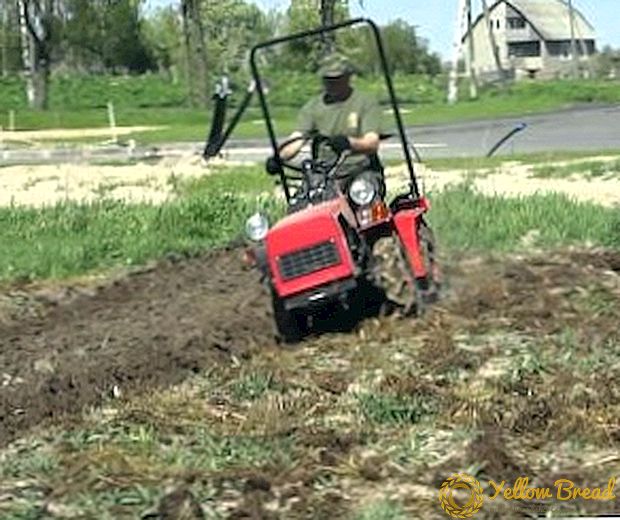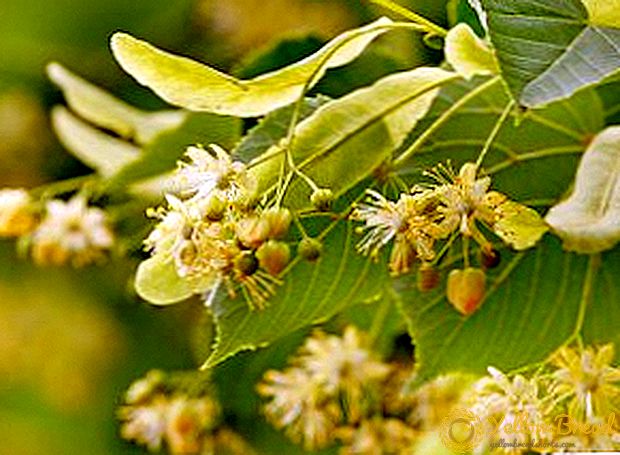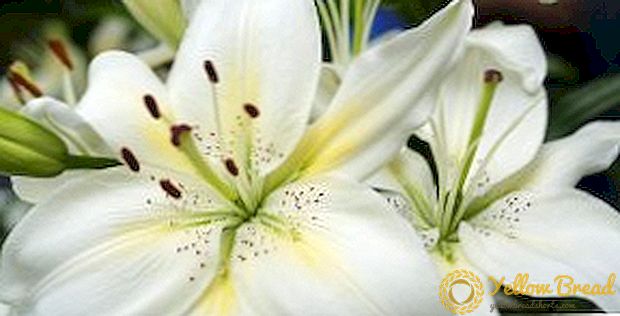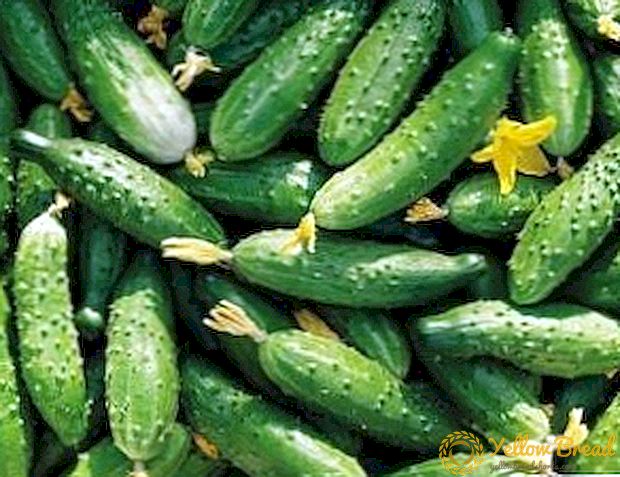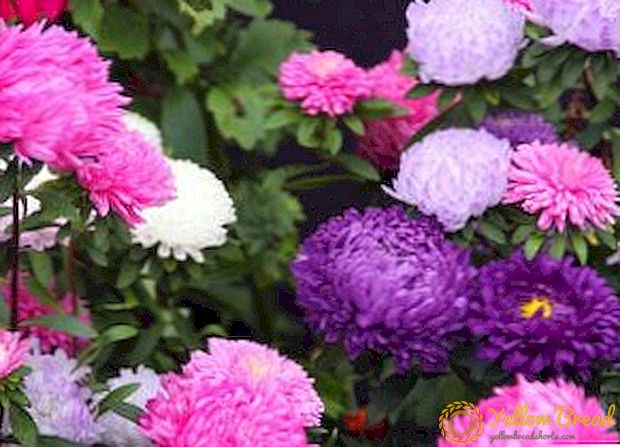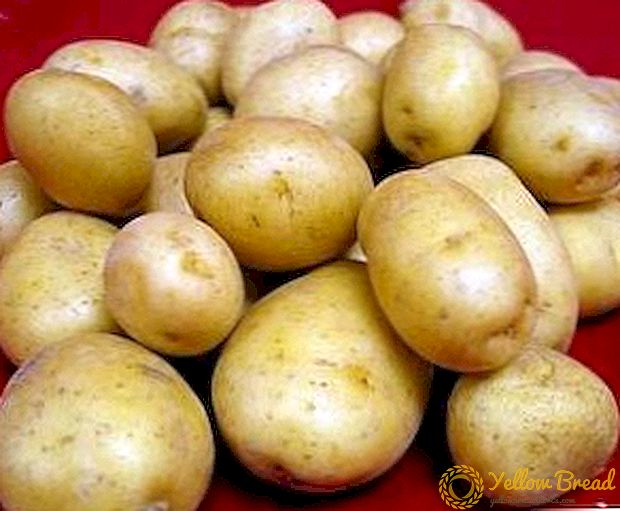
It is not possible to determine the varietal affiliation of potatoes, which is popularly called “Dutch”.
In the 80-90s of the last century a huge amount of imported planting material was brought to the country uncontrollably.
Making no distinction between varieties brought from around the world, domestic potato growers have become call them by place of origin - “Dutch”, “American”.
Characteristic varieties
The potato variety "Dutch", rooted in our gardens, is different:
- high yields
- early terms of tuber formation and crop ripening,
- leveled nest
- excellent presentation of tubers with small eyes,
- resistant to viral diseases.
These are mainly high-quality varieties of tableware.
More than 30 varieties of potatoes from the Netherlands passed varietal tests at the state sites, included in the State Register of the Russian Federation, recommended for cultivation in certain regions in personal and private farms.
The most famous: "Mona Lisa", "Asterix", "Yarla", "Red Scarlett", "Ukama", "Cleopatra", "Impala", "Anosta", "Condor", "Picasso", "Provento", "Caesar", as well as white Dutch potatoes.
Then there is the opportunity to get acquainted with the description of some varieties and their photos.
Potatoes "Dutch": description of the variety, photo
Mona lisa

Medium early variety. Productivity from 2 kg from a bush. It is highly resistant to viral diseases., ordinary scab, darkening of the flesh, but prone to phytophthora. Tubers elongated oval. The flesh is yellowish. Requires nitrogen fertilizer.
Asterix

Unlike most immigrants from the Netherlands, it belongs to middle-late varieties. Harvest stable, medium-high. The peel is reddish, the flesh is yellow with high taste.
Resistant to mechanical damage, a number of diseases - nematode, potato cancer, phytophthora. Good lezhkost. Requires additional watering. Does not need nitrogen supplements.
Jarla

Early, unpretentious. High yieldingResistant to viruses, including late blight and rust. It is not exacting to soils, is not afraid of frosts. Tubers are large, light, yellow.Cultivated for the early sale of products.
Ukam
It has a short growing season of 50-60 days. In the southern and central regions suitable for digging in early June. Productivity up to 350 kg per hundred. High-quality, oval-elongated, large up to 170 g fruits with yellowish pulp, which is not boiled soft during heat treatment.
Small scratches, damage to the peel, obtained during digging and transportation, overgrow and do not spoil the presentation, do not affect the shelf life. In hot weather, requires abundant watering.
Cleopatra
Early ripe variety. It has a traditional “Dutch” yield - 2-2.5 kg per bush. Suitable for cultivation on sandy, clay soils. Potatoes of red color, large, oval, table purpose with superficial small eyes. Long stored. Prone to scab.
Latona

Round, slightly elongated tubers, of medium size, suitable for sale 70-75 days after planting. The return of one plant 2-2,4 kg. Perfectly transported and stored.
Frisia (Frisia, Freesia)
Highly productive, medium early variety. Potatoes correct form. When stored for a long time does not sprout.Poor tolerates heavy soil, drought, lack of potassium. The flesh is creamy, dense.
Red scarlett

Young red, smooth tubers are suitable for boiling after 45-50 days, the production maturity of potatoes reaches 75-80 days. Unpretentious, easily tolerates weather changes, grows on any kind of soil.
Impala

Variety of table purpose. Early ripe. Vegetation period 60-70 days. Ecologically plastic, drought-resistant, it develops well in both cold and hot weather.
Perfectly preserved even in warm rooms. Productivity is good, 500 kg with 100 m². Tubers are oval, light yellow, retain the shape and white color of the pulp after boiling.
Symphony
 Refers to the medium. Tubers are flat, smooth, clean when digging. High yields on all types of soil. Resistant to phytophthora and scab.
Refers to the medium. Tubers are flat, smooth, clean when digging. High yields on all types of soil. Resistant to phytophthora and scab.
Features agrotehnika
In Russia, potatoes grown under widely publicized Dutch technology do not produce high yields. Therefore, the usual cultivation algorithm for our climate is observed.
Dutch varieties are prone to degeneration; regular planting material updates are required. It is not recommended to plant in one place for more than three years.
Even elite material pre treated with growth promoters (phytostim, epin, krezacin), are subjected to disinfection, germinate (vernalize), carry out calcinating or kerbing.
In early and middle-early varieties, a temperature of + 3.5 ° C is sufficient for sprouting sprouts, while the roots have enough + 4.5 ° C. Tubers subjected to vernalization are planted at lower temperatures of + 2-3ºС.
To improve aerobic properties, nutrient saturation, the soil is dug up twice - in late autumn and spring. During autumn processing, deep grooves are cut, which, before spring planting, are loosened with forks without turning over the upper layer. Between the rows leave a distance of 70-80 cm.
"Dutch" planted at the rate of 4-6 tubers per linear meter. Before planting, the tubers are sorted by size.The larger the potato, the greater must be the distance between them.
Depth of planting from 5 to 12 cm, depending on the size of the planting material and climate. The drier and hotter the climate, the deeper the hole should be.
Further care is the timely weeding, hilling, watering, dressing, depending on the characteristics of a particular variety.
Despite the high potential of the Dutch varieties, their popularity among farmers and gardeners is decreasing. Without constant recovery, regular supply of seed from Europe, the potato variety “Dutch” quickly loses its taste. The yield of potatoes and its economic value are decreasing.

